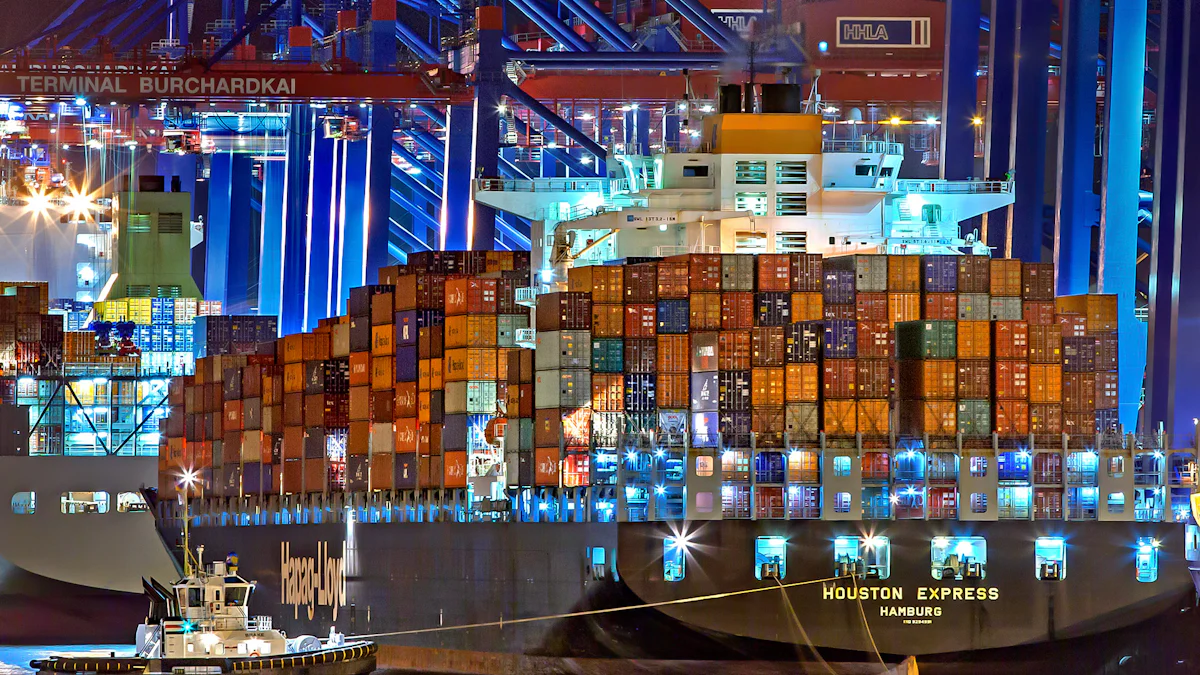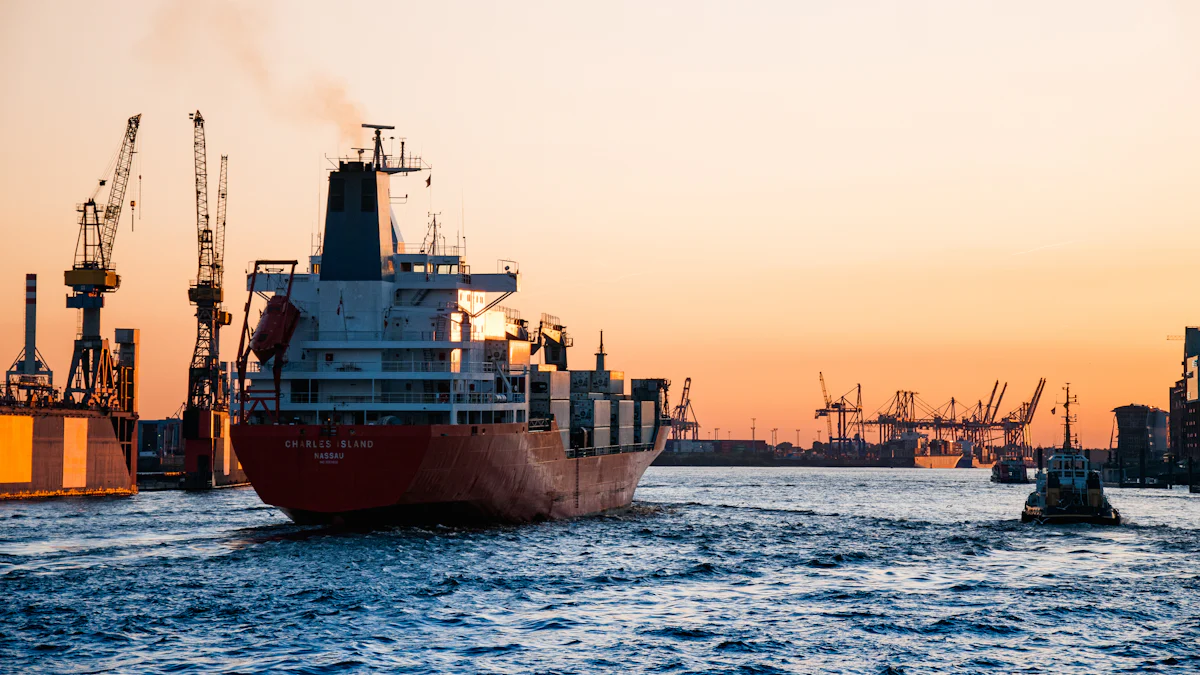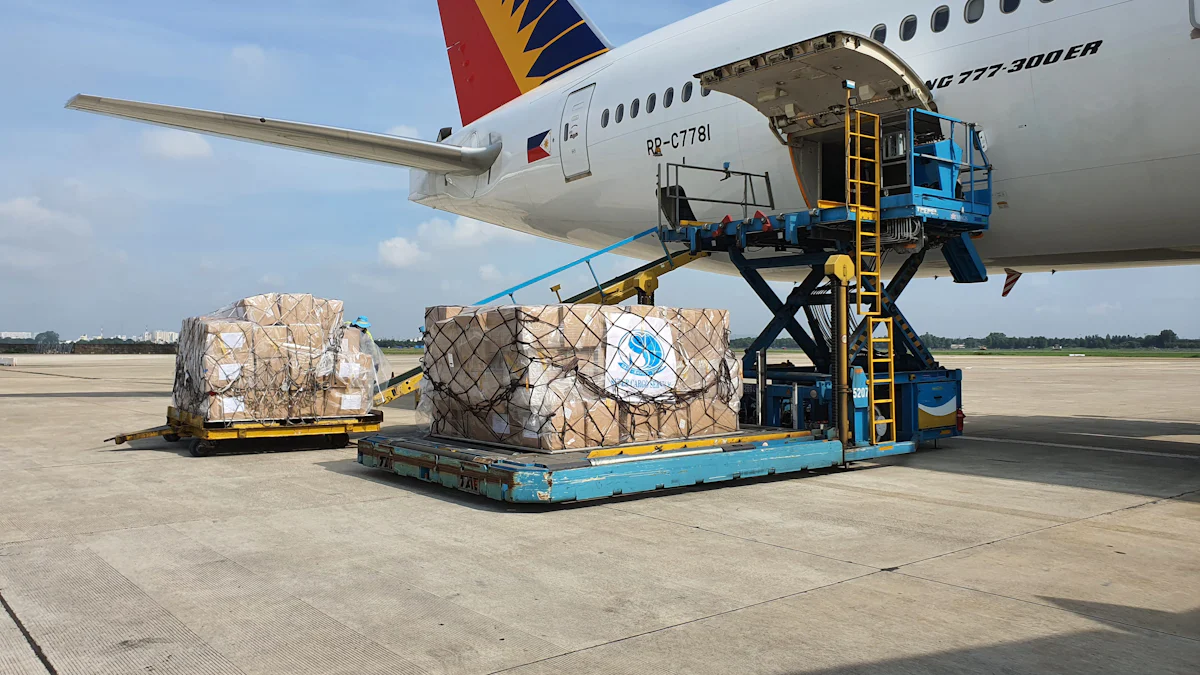
Shipping plays a vital role in modern business. Choosing the right method can impact your costs, delivery times, and overall efficiency. Air freight offers unmatched speed, making it ideal for urgent shipments. Sea freight, on the other hand, provides a cost-effective solution for large volumes. Each method suits different needs, depending on your priorities. Understanding these options helps you make informed decisions that align with your business goals.
Key Takeaways
- Air freight is the fastest shipping option, ideal for time-sensitive goods, ensuring delivery within 2 to 4 days.
- Sea freight is more cost-effective for large shipments, making it suitable for businesses prioritizing budget over speed.
- Evaluate your shipment's size, urgency, and budget to choose the most appropriate shipping method for your business needs.
- Consider the environmental impact of your shipping choices; sea freight generally has a lower carbon footprint compared to air freight.
- Adopt sustainable shipping practices, such as consolidating shipments and choosing eco-friendly carriers, to reduce your business's environmental impact.
- Align your shipping method with your long-term business goals to enhance operational efficiency and customer satisfaction.
- Regularly assess your shipping strategies to adapt to changing business needs and market demands.
Cost Comparison: Air Freight vs. Sea Freight
Air Freight Costs
Air freight is known for its speed, but this efficiency comes at a higher price. The cost of air freight depends on the chargeable weight of your shipment. This weight combines the actual weight and the volume of the cargo. Airlines calculate this to ensure fair pricing for both light and bulky goods. Fuel costs, security fees, and handling charges also contribute to the overall expense. For businesses shipping small, high-value items, air freight can be a practical choice despite its higher cost.
Sea Freight Costs
Sea freight offers a more economical option, especially for large shipments. Costs are typically calculated per container, making it ideal for transporting bulk goods. If your shipment does not fill an entire container, you can opt for less-than-container load (LCL) shipping. This allows you to share container space with other businesses, reducing costs further. While sea freight is slower, its affordability makes it a preferred choice for businesses prioritizing cost savings over speed.
Cost Efficiency for Different Business Scenarios
Choosing between air freight and sea freight depends on your business needs. If you deal with time-sensitive goods, air freight justifies its higher cost by ensuring faster delivery. For example, industries like electronics or pharmaceuticals often rely on air freight to meet tight deadlines. On the other hand, sea freight suits businesses shipping heavy or bulky items, such as furniture or machinery. Its cost efficiency becomes evident when transporting large volumes over long distances. By evaluating your shipment size, urgency, and budget, you can determine the most cost-effective option for your business.
Speed and Transit Time: Air Freight vs. Sea Freight

Air Freight Speed and Timeliness
Air freight offers unmatched speed for shipping goods. Most shipments arrive at their destination within 2 to 4 days. This makes it the fastest option for businesses handling urgent deliveries. Airlines operate on fixed schedules, ensuring consistent departure and arrival times. Weather disruptions or mechanical issues may cause delays, but these are rare compared to other shipping methods. If your business depends on meeting tight deadlines, air freight ensures your goods reach customers quickly and reliably.
Sea Freight Transit Times
Sea freight operates at a slower pace. Transit times often range from several weeks to over a month, depending on the shipping route. Ships travel vast distances across oceans, making them more susceptible to delays caused by weather or port congestion. Despite the slower speed, sea freight remains a dependable choice for non-urgent shipments. Businesses shipping large volumes of goods often find the extended transit time manageable when cost savings take priority.
Balancing Speed with Business Needs
Choosing between air freight and sea freight requires balancing speed with your business priorities. If you ship perishable goods or time-sensitive products, faster delivery justifies the higher cost of air freight. For example, industries like fashion or technology often rely on air freight to meet market demands. On the other hand, if your shipments involve heavy machinery or bulk items, sea freight provides a practical solution. Evaluate your delivery timelines, customer expectations, and budget to determine the best fit for your business.
Environmental Impact of Air Freight and Sea Freight

Carbon Emissions and Environmental Concerns
Shipping methods significantly impact the environment, and understanding these effects helps you make responsible choices. Air freight emits more carbon dioxide per ton-mile compared to sea freight. The high fuel consumption of airplanes contributes to this. For every shipment, air freight generates a larger carbon footprint due to its speed and energy-intensive nature. If your business prioritizes sustainability, this is an important factor to consider.
Sea freight, while slower, produces fewer emissions per ton-mile. Ships can carry massive volumes of cargo, making them more efficient for bulk transportation. However, the shipping industry still accounts for a notable share of global carbon emissions. Large vessels burn heavy fuel oil, which releases pollutants into the atmosphere. Both methods have environmental drawbacks, but sea freight generally has a lower impact when measured per unit of cargo.
Sustainable Shipping Practices for Businesses
You can adopt sustainable practices to reduce the environmental impact of your shipping operations. Start by optimizing your supply chain. Consolidating shipments minimizes the number of trips, which lowers emissions. For example, combining smaller shipments into one container for sea freight reduces fuel consumption.
Choosing eco-friendly carriers also makes a difference. Many shipping companies now invest in greener technologies, such as fuel-efficient engines or alternative fuels. Look for carriers that prioritize sustainability and align with your business values.
Offsetting carbon emissions is another option. Some businesses invest in carbon offset programs to balance the environmental cost of their shipments. These programs fund projects like reforestation or renewable energy development. While this doesn’t eliminate emissions, it helps mitigate their impact.
Finally, evaluate your shipping methods regularly. If possible, shift non-urgent shipments to sea freight. This reduces reliance on air freight and lowers your overall carbon footprint. By taking these steps, you contribute to a more sustainable future while meeting your business needs.
Cargo Suitability: Air Freight vs. Sea Freight
Types of Goods Best Suited for Air Freight
Air freight works best for shipments that require speed and precision. You should consider this option for goods that are time-sensitive or perishable. Products like fresh flowers, seafood, and pharmaceuticals often rely on air freight to maintain their quality during transit. High-value items, such as electronics, luxury goods, or jewelry, also benefit from the security and quick delivery air freight provides. If your shipment involves lightweight but high-priority goods, air freight ensures they reach their destination without delay.
Types of Goods Best Suited for Sea Freight
Sea freight is ideal for transporting large, heavy, or bulky items. Businesses often use this method for goods like furniture, machinery, and construction materials. Non-perishable items, such as canned food or textiles, also align well with the slower transit times of sea freight. If your shipment involves raw materials or oversized cargo, sea freight offers the space and cost efficiency you need. This method suits businesses that prioritize affordability over speed, especially for international shipping.
Evaluating Cargo Size, Weight, and Handling Requirements
Understanding your cargo’s size, weight, and handling needs helps you choose the right shipping method. Air freight charges depend on chargeable weight, which combines the actual weight and volume of your shipment. This makes it suitable for smaller, lighter goods. Sea freight, on the other hand, calculates costs based on container usage. Full-container loads (FCL) work well for large shipments, while less-than-container loads (LCL) allow you to share space with others.
Handling requirements also play a role. Fragile or high-value items often need the controlled environment and careful handling air freight provides. For goods that can withstand longer transit times and rougher handling, sea freight offers a practical solution. By assessing these factors, you can align your shipping method with your cargo’s specific needs.
Business Considerations for Choosing Air Freight or Sea Freight
Reliability and Consistency in Shipping
Reliability plays a crucial role in your shipping decisions. Air freight offers a high level of consistency. Airlines follow strict schedules, ensuring predictable departure and arrival times. This makes air freight a dependable choice when you need to meet tight deadlines or deliver time-sensitive goods. Delays caused by weather or technical issues are rare, which adds to its reliability.
Sea freight, while reliable for non-urgent shipments, faces challenges like port congestion and weather disruptions. These factors can lead to delays, especially on long international routes. However, for businesses shipping large volumes, sea freight remains a consistent option when delivery timelines are flexible. Understanding the reliability of each method helps you align your shipping strategy with customer expectations.
Handling and Logistics Challenges
Shipping involves various handling and logistics requirements. Air freight simplifies these processes by offering faster transit times and streamlined handling. Airports have advanced facilities to manage cargo efficiently, reducing the risk of damage or loss. This makes air freight suitable for fragile or high-value items that require extra care during transit.
Sea freight, on the other hand, involves more complex logistics. Loading and unloading cargo at ports can take time, especially for large shipments. Containers may also face rough handling during transit, which could affect delicate goods. Additionally, customs clearance for sea freight often requires more documentation, adding to the logistical workload. Evaluating these challenges helps you choose the method that aligns with your operational capabilities.
Aligning Shipping Methods with Long-Term Business Goals
Your shipping method should support your long-term business objectives. Air freight works well if your goals include rapid market entry or maintaining a competitive edge through fast delivery. It allows you to respond quickly to customer demands, which can enhance your reputation and drive growth in industries like technology or fashion.
Sea freight aligns better with cost-saving strategies and sustainability goals. Its affordability makes it ideal for businesses focusing on bulk shipments or reducing operational expenses. Additionally, sea freight’s lower carbon footprint supports eco-friendly initiatives, which can improve your brand image in the long run. By aligning your shipping choices with your business priorities, you create a strategy that supports both immediate needs and future growth.
Air freight and sea freight each serve distinct business needs. Air freight excels in speed, making it the best choice for time-sensitive shipments. Sea freight, however, offers cost efficiency and accommodates large volumes of cargo. To choose the right method, you should evaluate your priorities, such as delivery speed, budget, environmental impact, and the type of goods you ship. A well-planned shipping strategy ensures you meet customer expectations while optimizing costs and improving operational efficiency. By aligning your shipping decisions with your business goals, you can achieve long-term success.
FAQ
What is the main difference between air freight and sea freight?
The primary difference lies in speed and cost. Air freight delivers goods quickly, often within a few days, but at a higher cost. Sea freight takes longer, sometimes weeks, but offers a more economical solution for large shipments.
Which shipping method is better for urgent deliveries?
Air freight is the best choice for urgent deliveries. It ensures your goods reach their destination in the shortest time possible, typically within 2 to 4 days.
How do I calculate the cost of air freight?
Air freight costs depend on chargeable weight, which combines the actual weight and volume of your shipment. Airlines use this calculation to ensure fair pricing for both light and bulky goods.
Is sea freight suitable for small shipments?
Yes, sea freight can accommodate small shipments through less-than-container load (LCL) shipping. This option allows you to share container space with other businesses, reducing costs.
Which shipping method is more environmentally friendly?
Sea freight generally has a lower carbon footprint per ton-mile compared to air freight. Ships carry larger volumes of cargo, making them more fuel-efficient for bulk transportation.
What types of goods are best suited for air freight?
Air freight works well for time-sensitive, perishable, or high-value items. Examples include fresh flowers, seafood, pharmaceuticals, electronics, and luxury goods.
Can I ship oversized cargo using air freight?
Air freight has limitations on cargo size and weight. For oversized or heavy items, sea freight is a better option due to its larger capacity and cost efficiency.
How reliable is sea freight compared to air freight?
Sea freight is reliable for non-urgent shipments but may face delays from weather or port congestion. Air freight offers greater reliability with fixed schedules and fewer disruptions.
What documents do I need for international shipping?
For both air and sea freight, you typically need a bill of lading, commercial invoice, packing list, and customs declaration. Sea freight may require additional documentation depending on the destination.
How can I choose the right shipping method for my business?
Evaluate your priorities, such as delivery speed, budget, environmental impact, and cargo type. Consider your business goals and customer expectations to make an informed decision.
Table of Contents
- Key Takeaways
- Cost Comparison: Air Freight vs. Sea Freight
- Speed and Transit Time: Air Freight vs. Sea Freight
- Environmental Impact of Air Freight and Sea Freight
- Cargo Suitability: Air Freight vs. Sea Freight
- Business Considerations for Choosing Air Freight or Sea Freight
-
FAQ
- What is the main difference between air freight and sea freight?
- Which shipping method is better for urgent deliveries?
- How do I calculate the cost of air freight?
- Is sea freight suitable for small shipments?
- Which shipping method is more environmentally friendly?
- What types of goods are best suited for air freight?
- Can I ship oversized cargo using air freight?
- How reliable is sea freight compared to air freight?
- What documents do I need for international shipping?
- How can I choose the right shipping method for my business?

